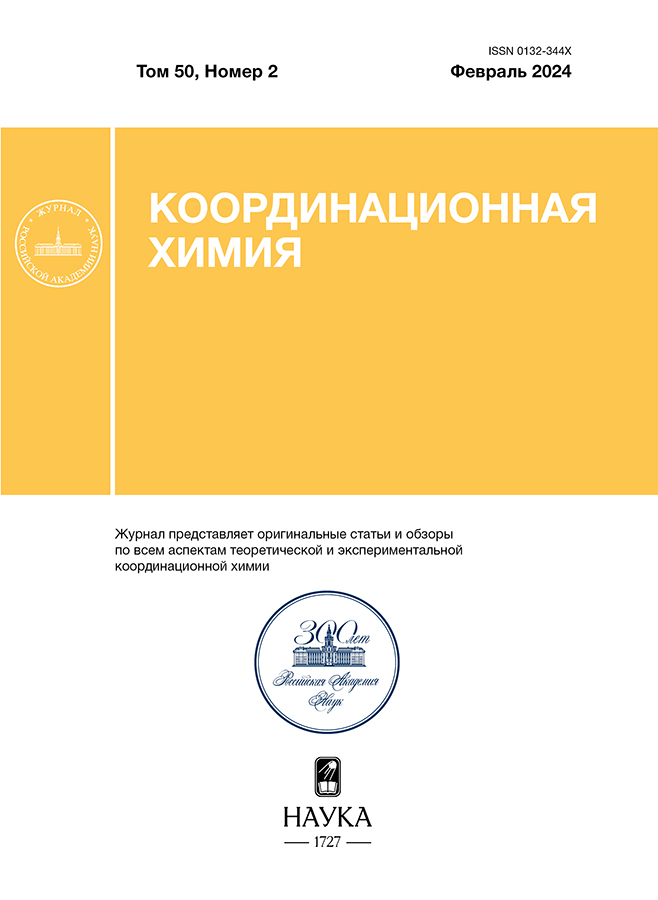Composite Materials Based on Biocompatible Metal-Organic Framework and Anthocyanins from Hibiscus sabdariffa for Active Food Packaging
- Authors: Pak A.M.1,2, Novikov V.V.2
-
Affiliations:
- Nesmeyanov Institute of Organoelement Compounds, Russian Academy of Sciences
- Moscow Institute of Physics and Technology (National Research University)
- Issue: Vol 50, No 2 (2024)
- Pages: 79-84
- Section: Articles
- URL: https://rjonco.com/0132-344X/article/view/667615
- DOI: https://doi.org/10.31857/S0132344X24020012
- EDN: https://elibrary.ru/OSGKHL
- ID: 667615
Cite item
Abstract
The biocompatible metal-organic framework [Zn4(GA)4(H2O)4] · 4H2O (H2GA = glutamic acid) was used as a container for anthocyanins from Hibiscus sabdariffa in composite films based on kappa-carrageenan and hydroxypropyl methylcellulose. The obtained composite materials showed high antioxidant activity and ability to undergo pH-induced color change upon reactions with gaseous products of pathogen development and, hence, possess the potential for practical application as functional materials for food packaging.
Full Text
About the authors
A. M. Pak
Nesmeyanov Institute of Organoelement Compounds, Russian Academy of Sciences; Moscow Institute of Physics and Technology (National Research University)
Email: novikov84@gmail.com
Russian Federation, Moscow; Moscow
V. V. Novikov
Moscow Institute of Physics and Technology (National Research University)
Author for correspondence.
Email: novikov84@gmail.com
Russian Federation, Moscow
References
- Yildirim S., Röcker B., Pettersen M. K. et al. // Compr. Rev. Food Sci. Food Saf. 2018. V. 17. № 1. P. 165.
- Ozdemir M., Floros J. D. // Crit. Rev. Food Sci. Nutr. Taylor & Francis, 2004. V. 4. № 3. P. 185.
- Oliveira Filho J. G. de, Braga A. R.C., Oliveira B. R. de et al. // Food Res. Int. 2021. V. 142. P. 110202.
- Khoo H.E., Azlan A., Tang S. T. et al. // Food Nutr. Res. 2017. V. 61. № 1. P. 1361779.
- Etxabide A., Kilmartin P. A., Maté J. I. // Food Control. 2021. V. 121. P. 107645.
- Priyadarshi R., Ezati P., Rhim J.-W. // ACS Food Sci. Technol. 2021. V. 1. № 2.
- Abdallah E.M. // J. Acute Dis. 2016. V. 5. № 6. P. 512.
- Jabeur I., Pereira E., Barros L. et al. // Food Res. Int. 2017. V. 100. P. 717.
- Lin T.-L., Lin H.-H., Chen C.-C. et al. // Nutr. Res. 2007. V. 27. № 3. P. 140.
- Ali B.H., Cahliková L., Opletal L. et al. // J. Pharm. Pharmacol. 2017. V. 69. № 9. P. 1219.
- Mozaffari-Khosravi H., Jalali-Khanabadi B.-A., Afkhami-Ardekani M. et al. // J. Hum. Hypertens. 2009. V. 23. № 1. P. 48.
- Siracusa V., Rocculi P., Romani S. et al. // Trends Food Sci. Technol. 2008. V. 19. № 12. P. 634.
- Dickinson E. // Food Hydrocoll. Elsevier. 2009. V. 23. № 6. P. 1473.
- Saha D., Bhattacharya S. // J. Food Sci. Technol. 2010. V. 47. № 6. P. 587.
- Krempel M., Griffin K., Khouryieh H. Preservatives and Preservation Approaches in Beverages / Еd. Grumezescu A. M., Holban A. M. Academic Press, 2019. P. 427.
- Vries J. de // Conf. Gums and Stabilisers for the Food Industry – 12. 2004. P. 23.
- BeMiller J.N. // Gluten-Free Cereal Products and Beverages / Еd. Arendt E. K., Dal Bello F. San Diego: Academic Press, 2008. P. 203.
- Jiménez A., Requena R., Vargas M. et al. Role of Materials Science in Food Bioengineering. Elsevier, 2018. P. 266.
- Hanula M., Pogorzelska-Nowicka E., Pogorzelski G. et al. // Agriculture. Multidisciplinary Digital Publishing Institute. 2021. V. 11. № 7. P. 653.
- Gutiérrez T.J., León I. E., Ponce A. G. et al. // Polymers. Multidisciplinary Digital Publishing Institute. 2022. V. 14. № 22. P. 4881.
- Alizadeh Sani M., Tavassoli M., Salim S. A. et al. // Food Hydrocoll. 2022. V. 124. P. 107324.
- Wang Q., Astruc D. // Chem. Rev. 2020. V. 120. № 2. P. 1438.
- Kirchon A., Feng L., Drake H. F. et al. // Chem. Soc. Rev. 2018. V. 47. № 23. P. 8611.
- McKinlay A.C., Morris R. E., Horcajada P. et al. // Ang Chem Int Ed. 2010. V. 49. № 36. P. 6260.
- Li J.-R., Sculley J., Zhou H.-C. // Chem. Rev. 2012. V. 112. № 2. Р. 869.
- Dybtsev D.N., Nuzhdin A. L., Chun H. et al. // Angew. Chem. 2006. V. 118. № 6. P. 930.
- Horcajada P., Chalati T., Serre C. et al. // Nat. Mater. 2010. V. 9. P. 172.
- Wang H.-S. // Coord. Chem. Rev. 2017. V. 349. P. 139.
- Pak A.M., Zakharchenko E. N., Korlyukov A. A. et al. // Russ. J. Coord. Chem. 2022. V. 48. № 4. P. 195.
- Kathalikkattil A.C., Roshan R., Tharun J. et al. // Chem. Commun. 2016. V. 52. № 2. P. 280.
- Cherrington R., Liang J. Materials and Deposition for Plastic Components for Multifunctionalty. Oxford: William Andrew Publishing, 2016. V. 13. № 6. P. 3340.
- Rhein-Knudsen N., Ale M. T., Meyer A. S. // Mar. Drugs. 2015. V. 13. № 6. P. 3340.
Supplementary files















